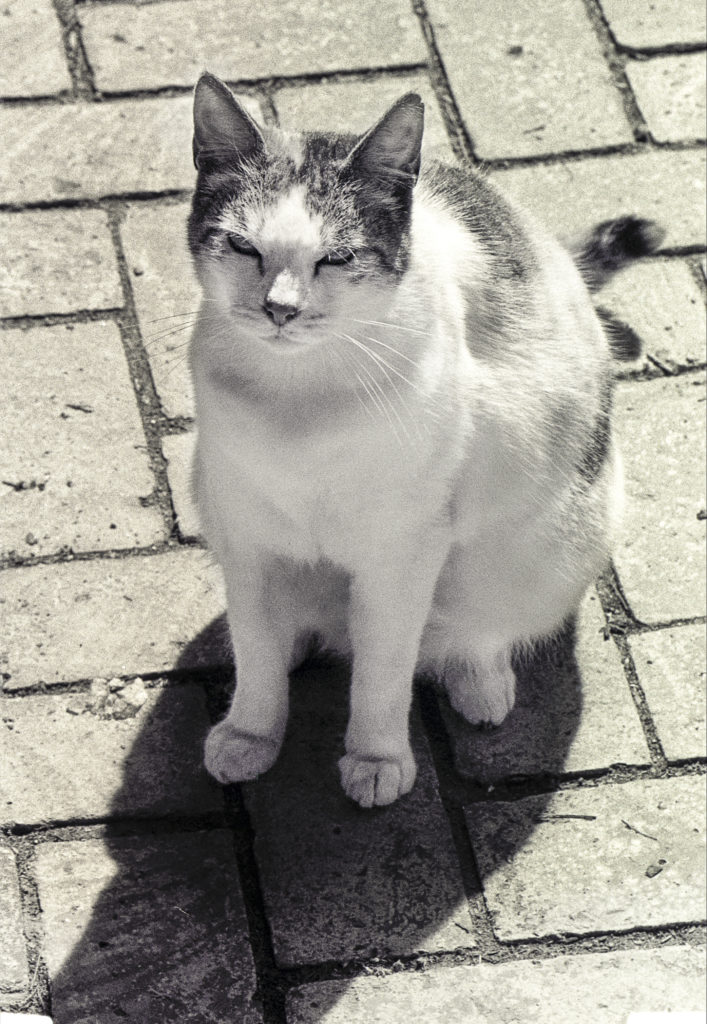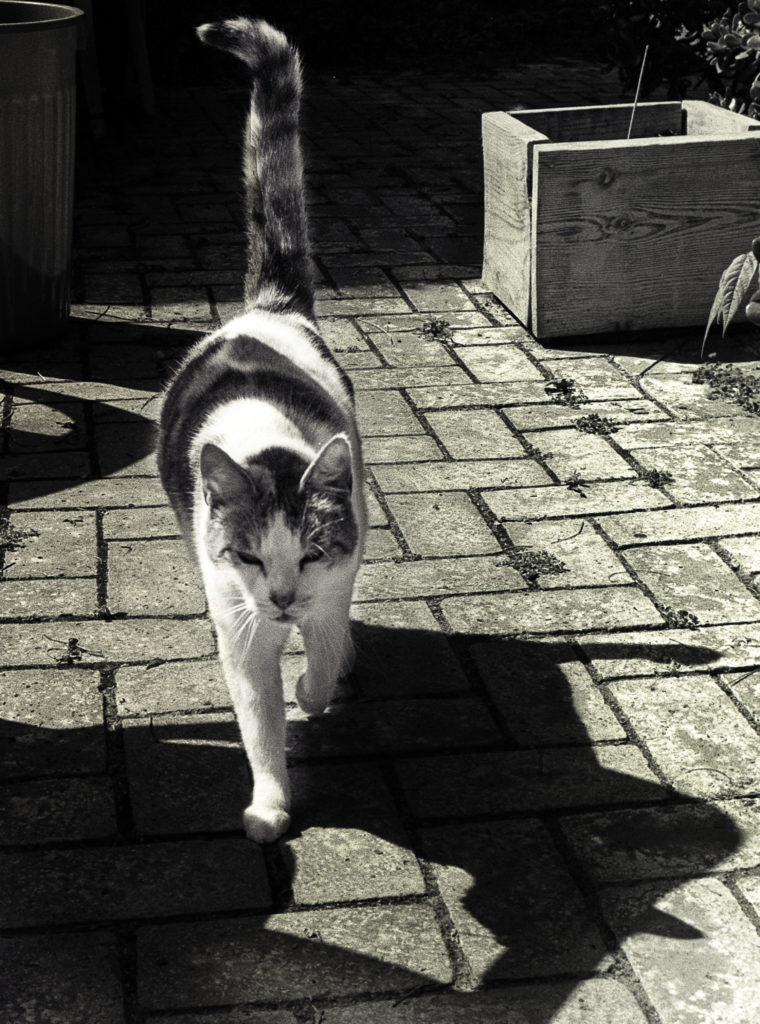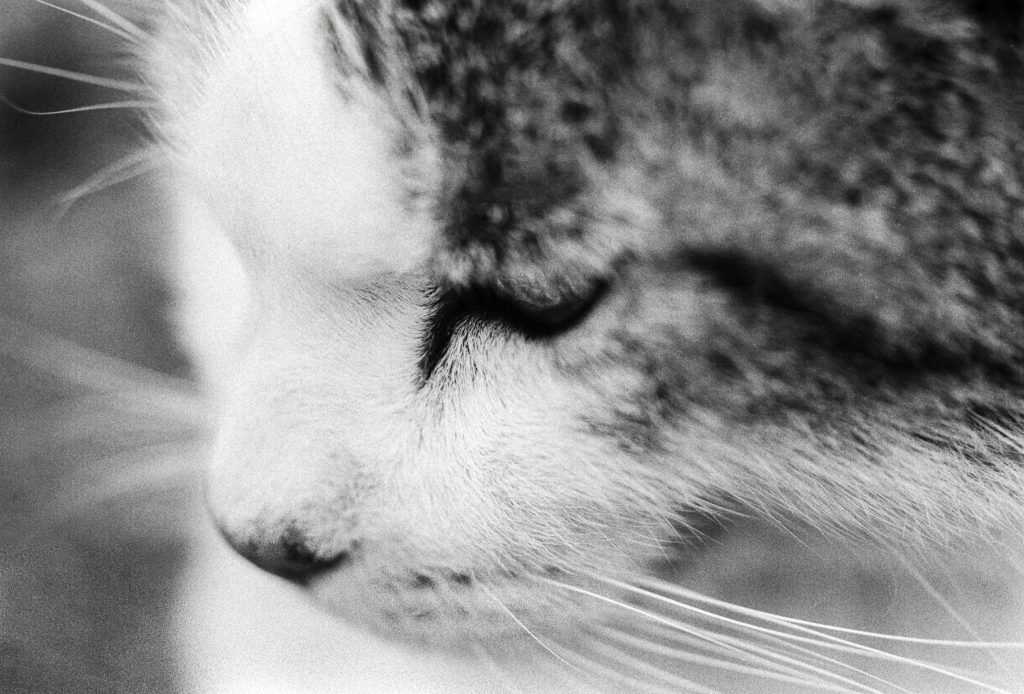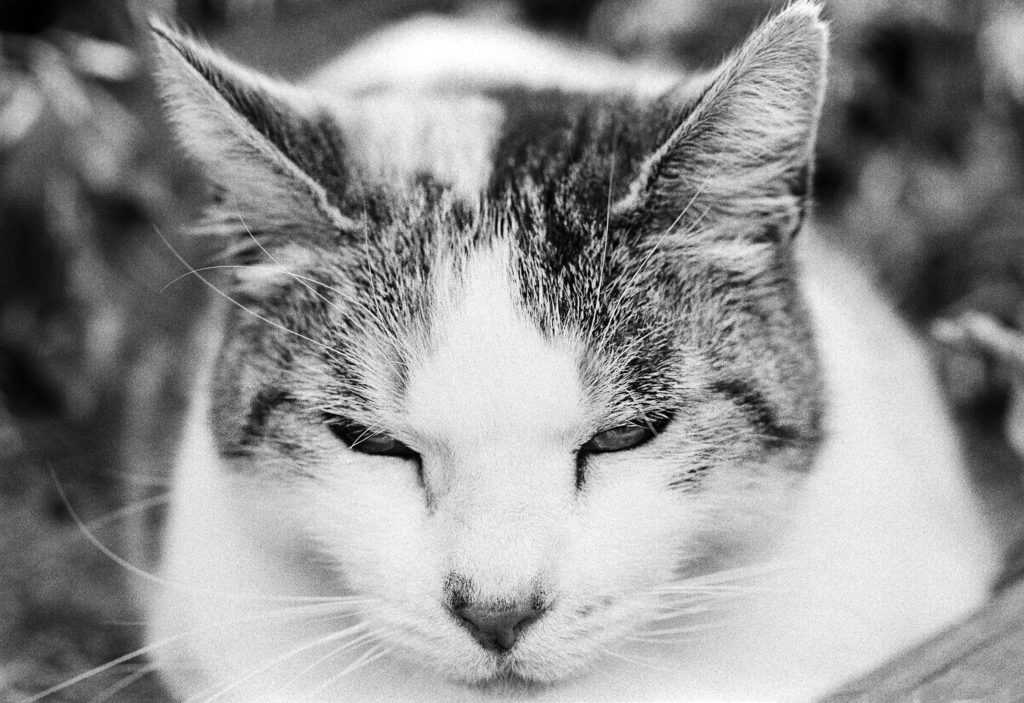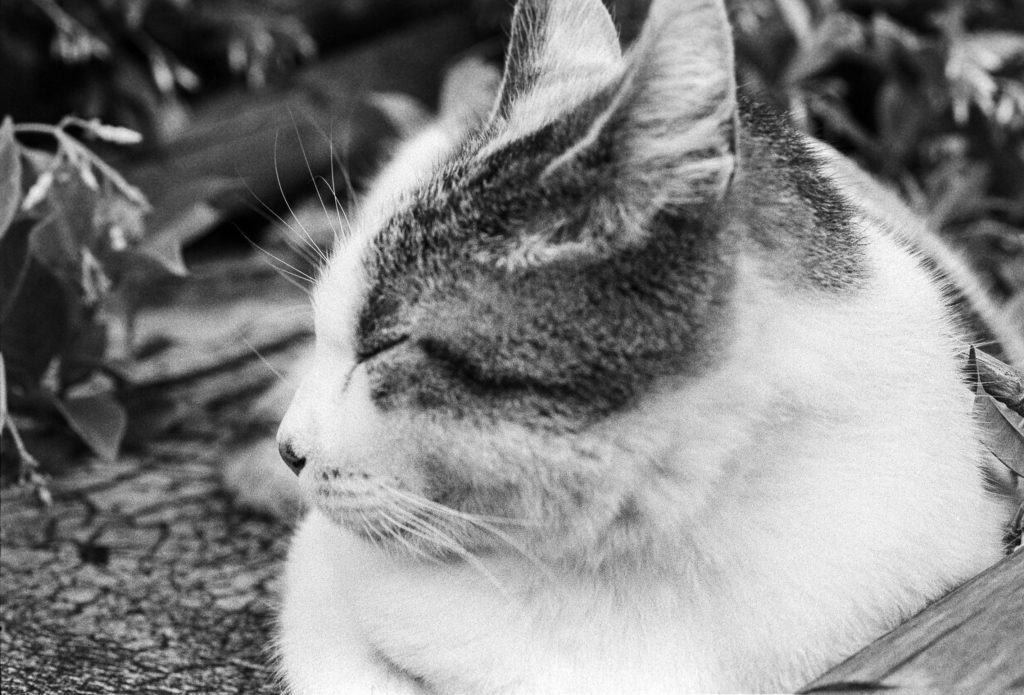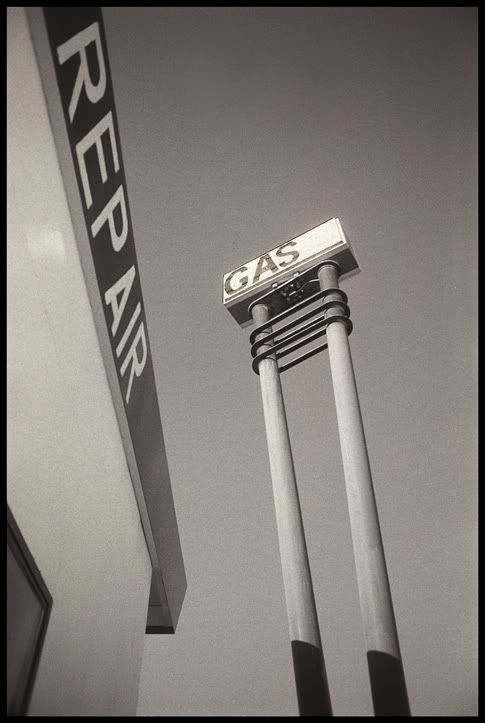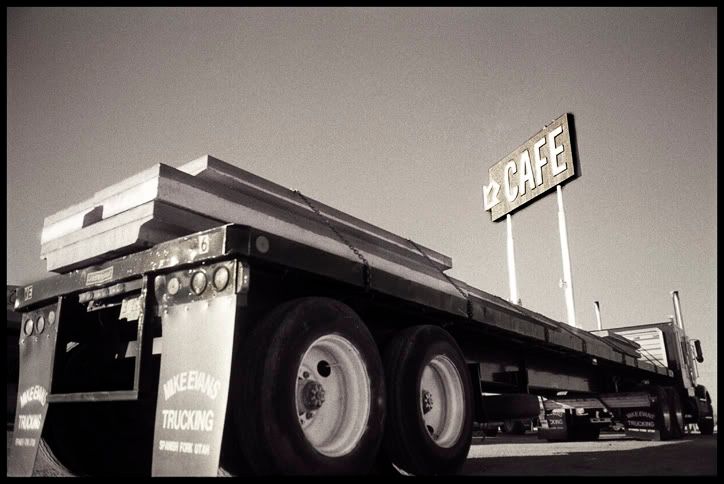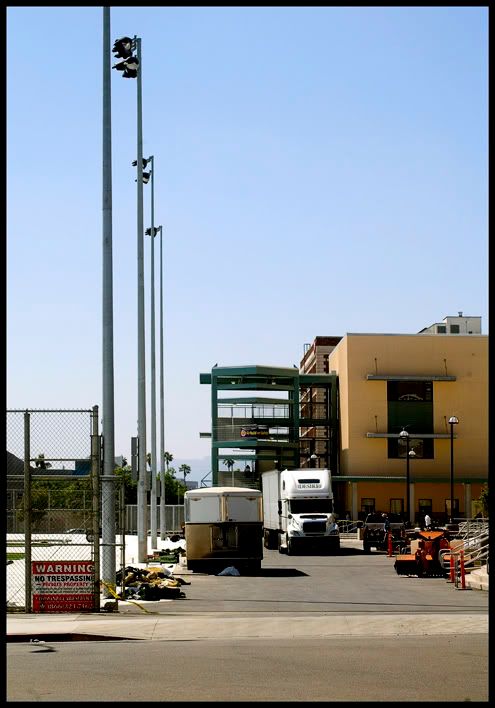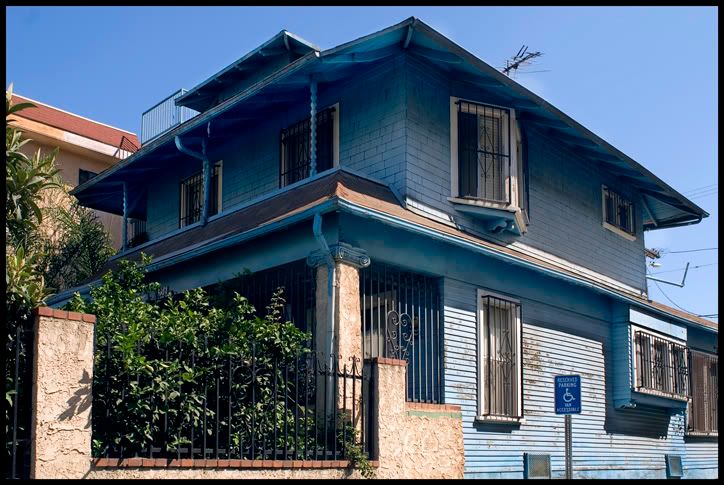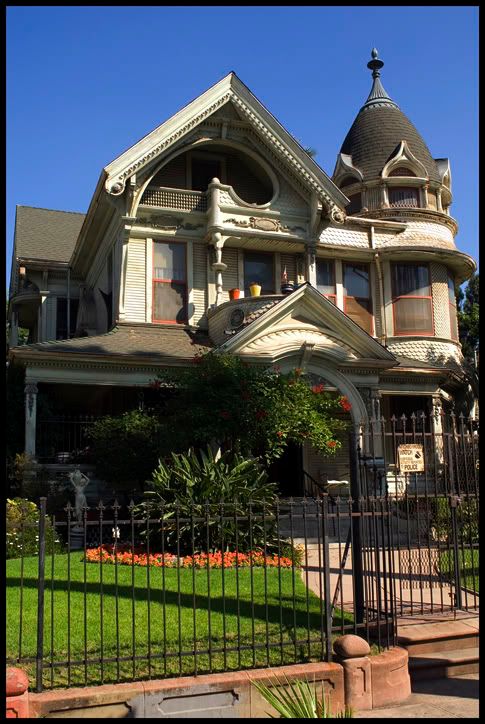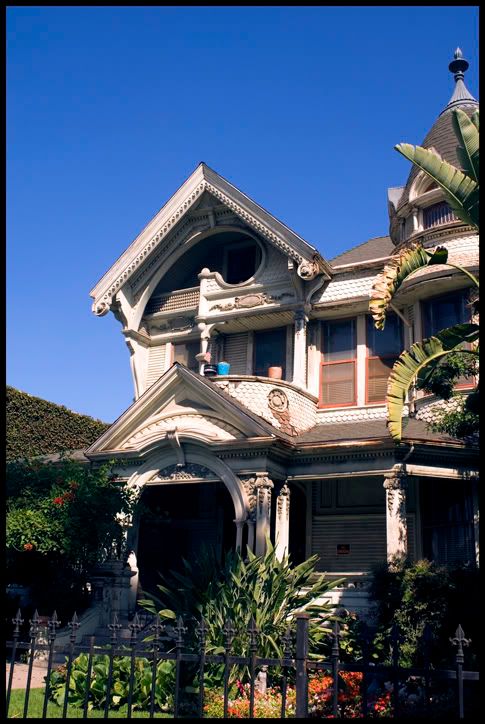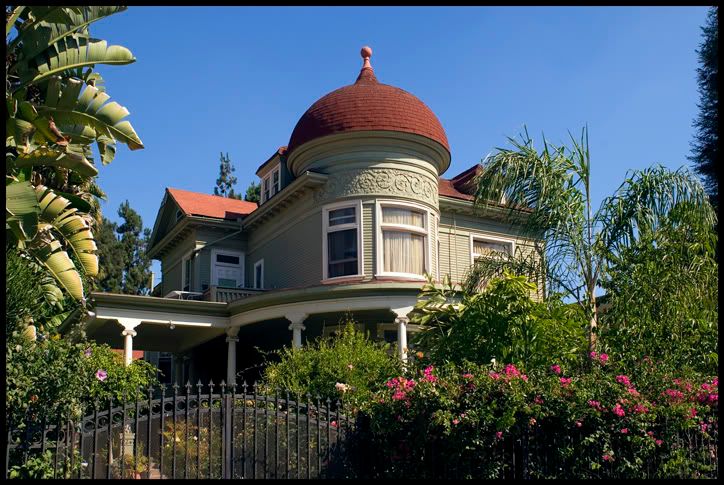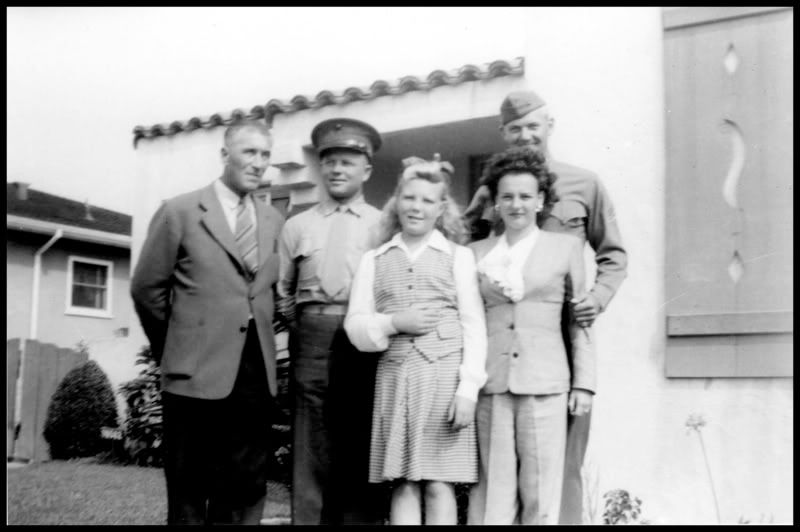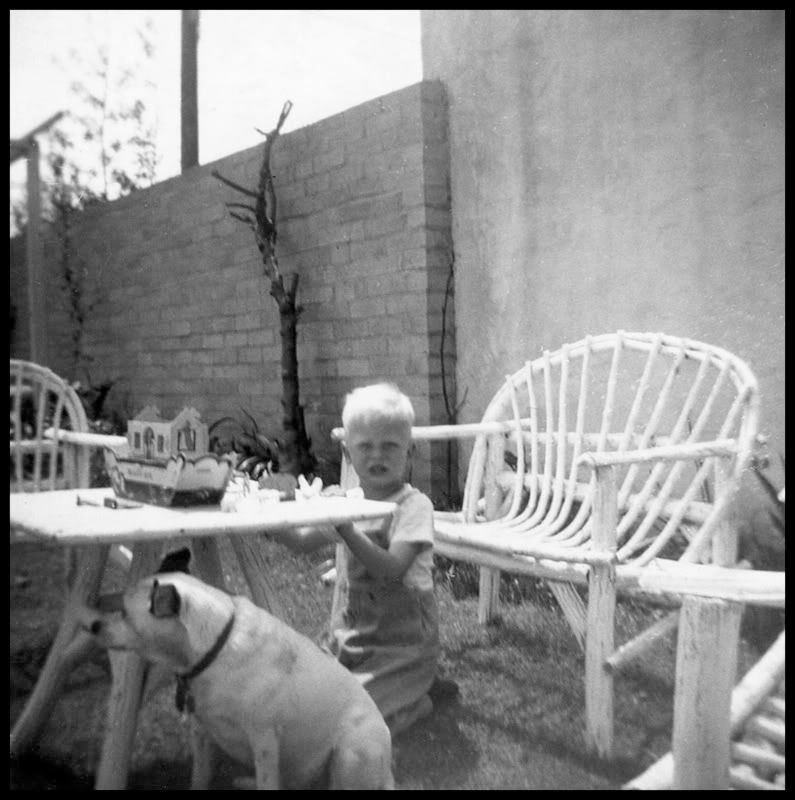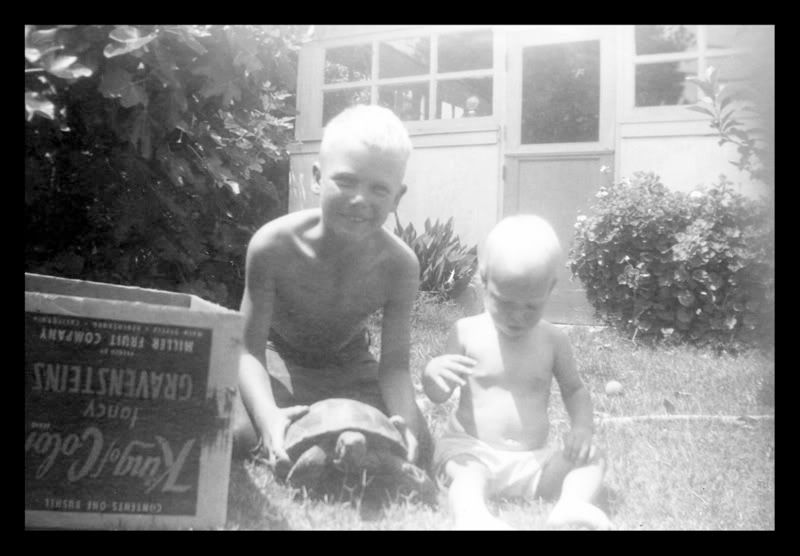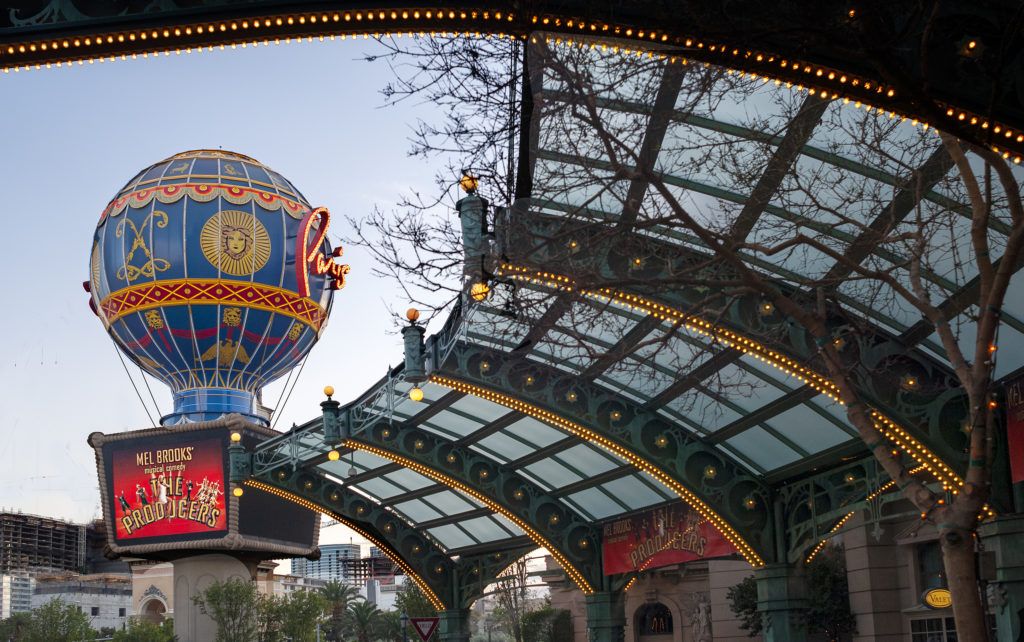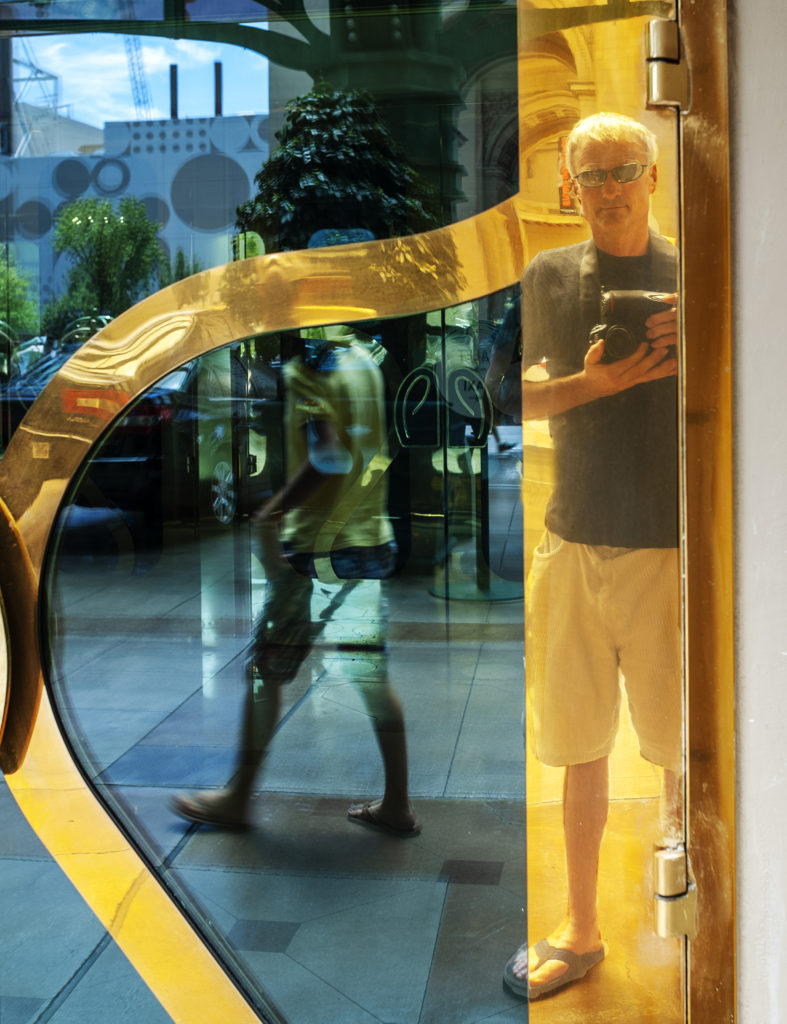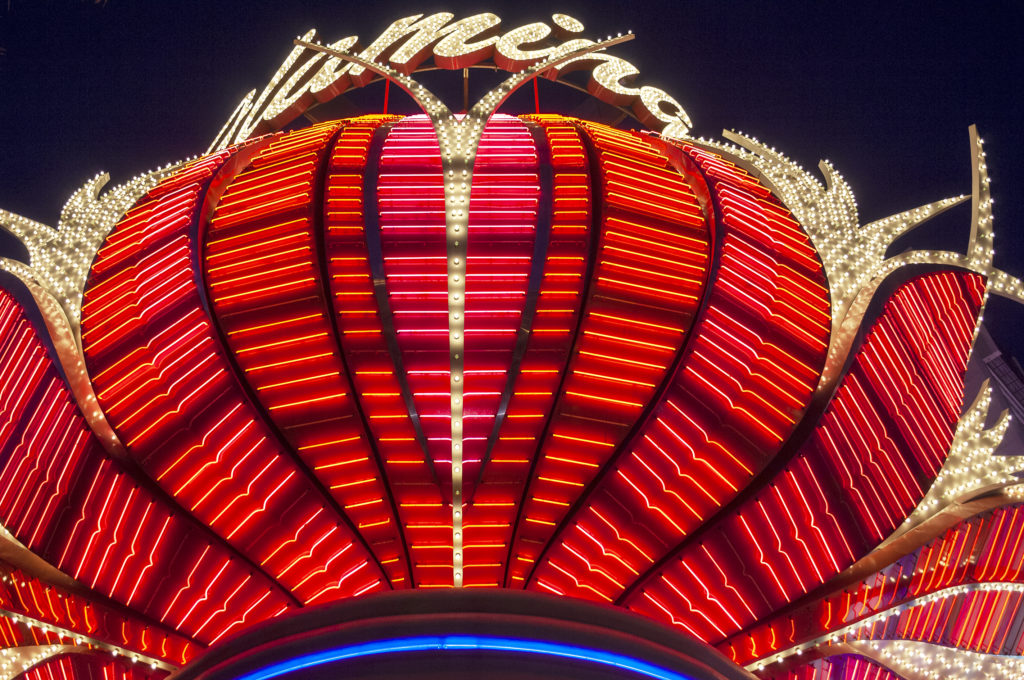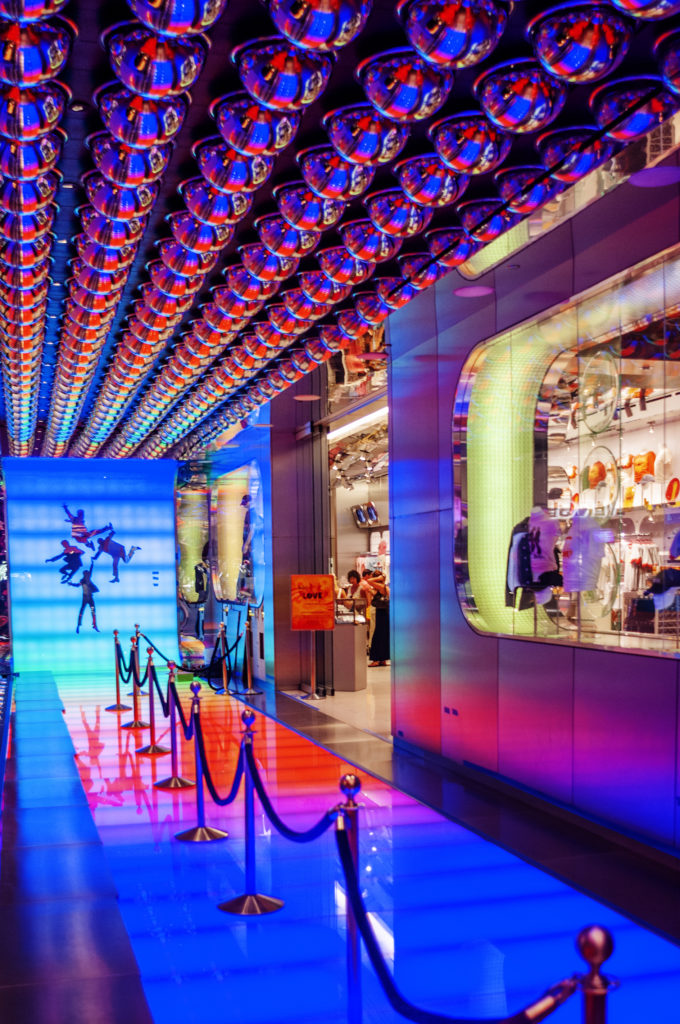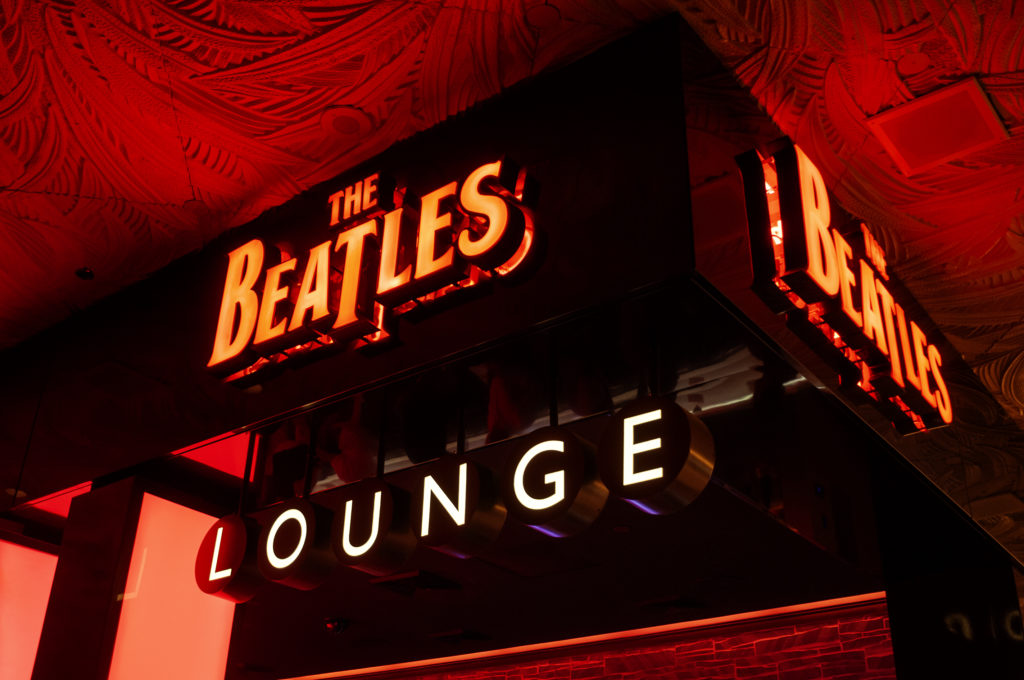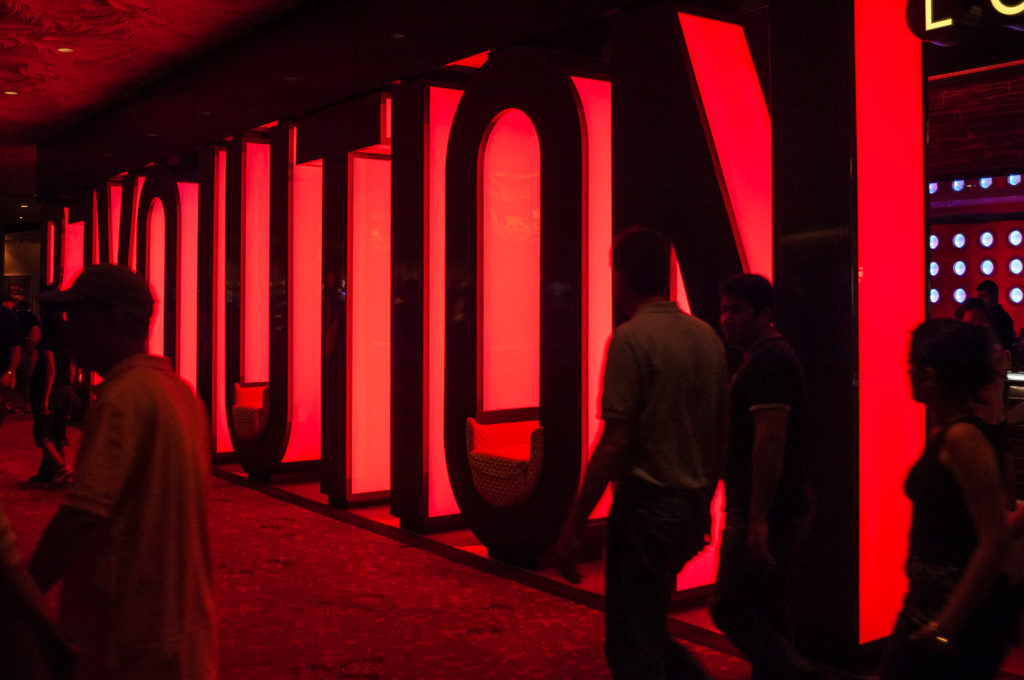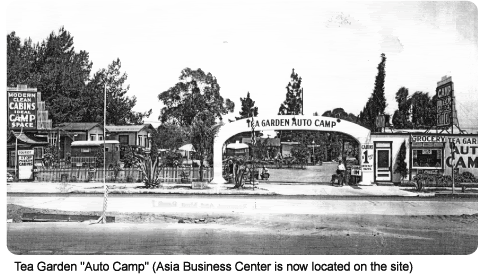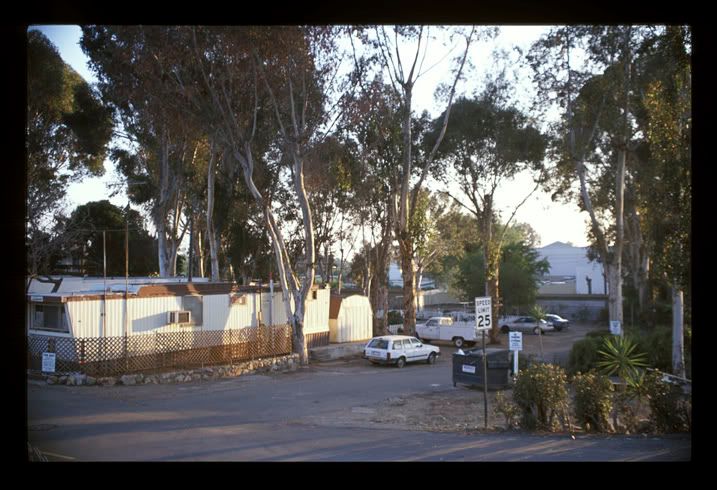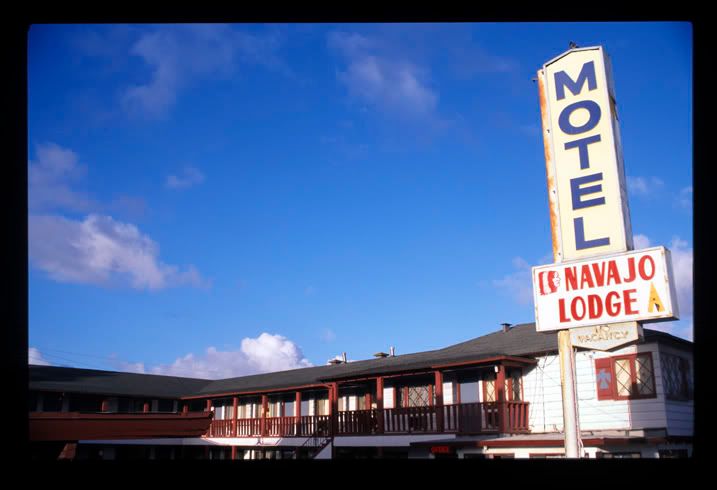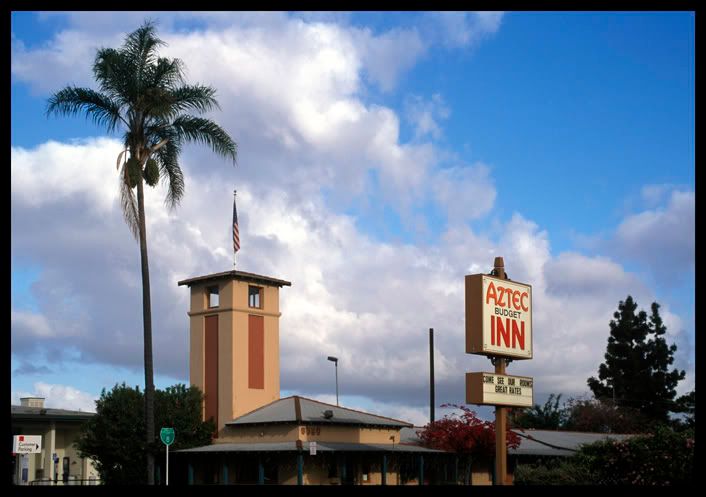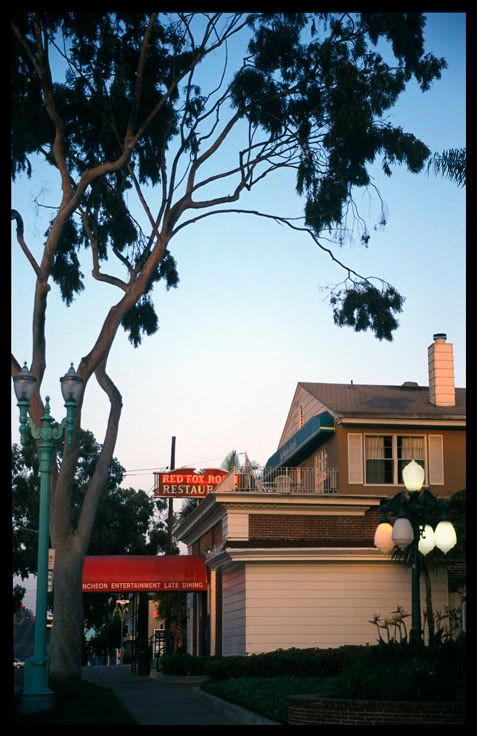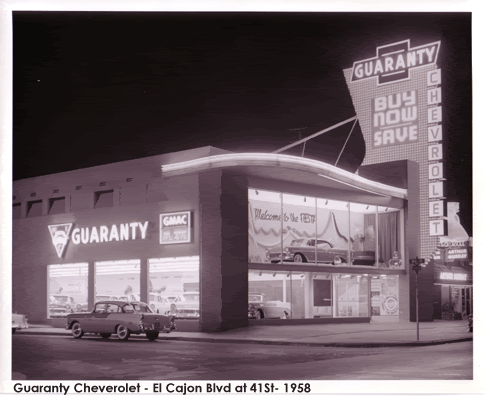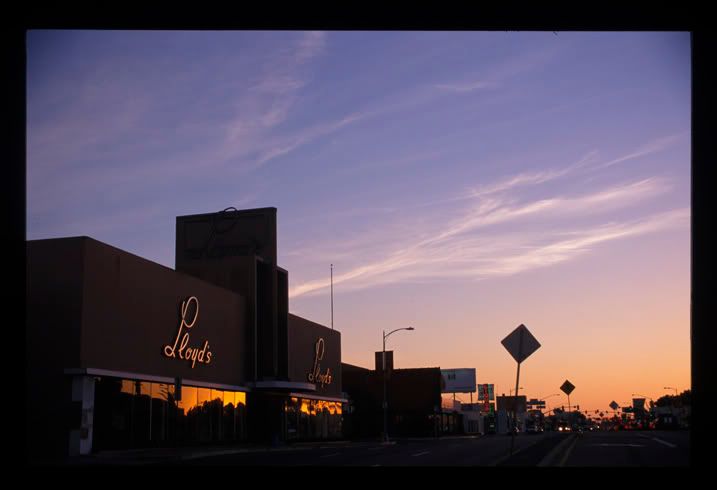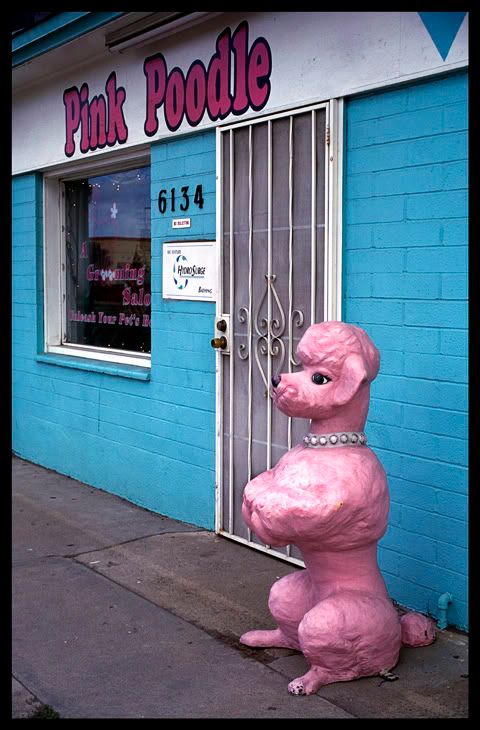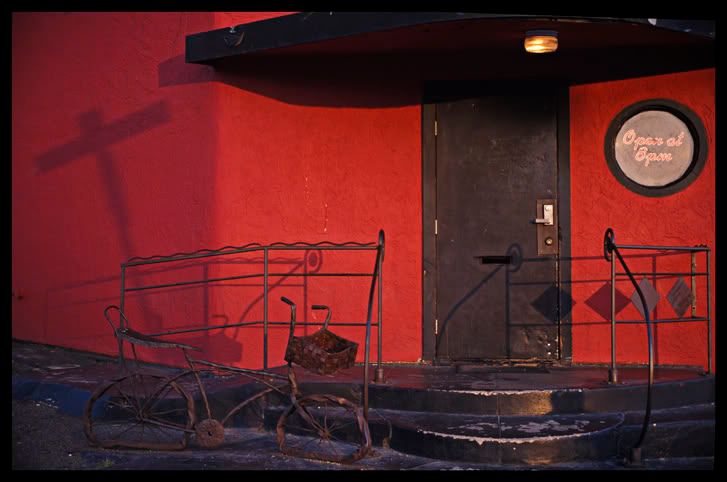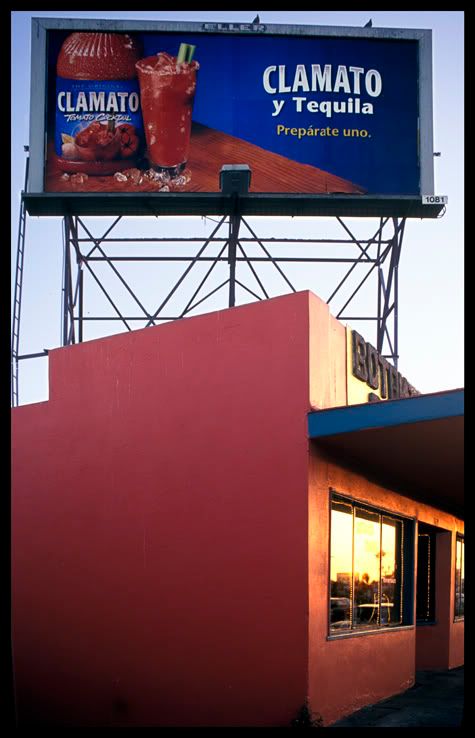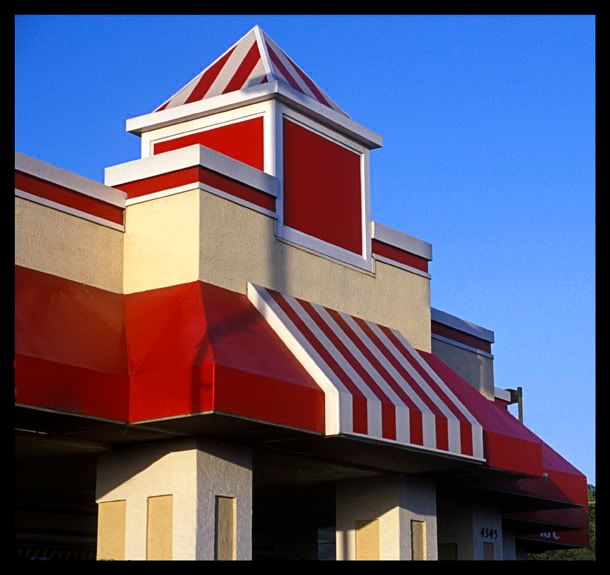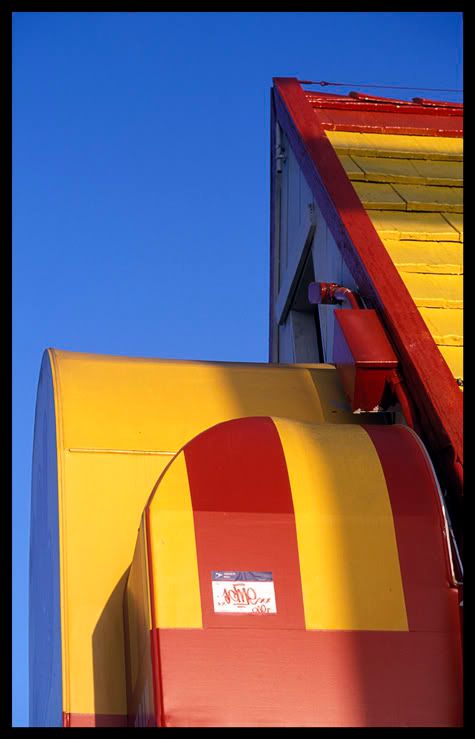
There was probably no landmark more associated with The Boulevard than the Campus Drive In Movie Theatre. From 1948 The Campus Drive In was famous for its 50-x 80-foot neon mural and 46-foot tall majorette complete with twirling baton and Indian headdress. The background scene of the mural included the old SDSU campanile–Hepner Hall– the Hardy Memorial Tower, goal posts and Cowles mountain with an “S” on it.
Tickets were 50 cents a piece. You had the choice of walk in (200 available seats) or drive in (700 cars).
If memory serves me correctly, Sam J. Russo, chief operator of The Campus Drive In, also brought forth the neighboring College Theatre. In its day The College Theatre was among San Diego’s most renown in terms of screen size, seating comfort, and sound quality. I also have this memory of seeing a picture there called The Loved One in 1965, starring Jonathan Winters. A few of the more choice movie theatres offered reserved ticket sales. The days of movie going as an event.
By the time I got my first job as a film projectionist at the College Theatre in 1979, the connection between The College and Campus Drive In was dissolved. Separate owners. The operator of the The College was a man named Herb Krapsi. Apparently bored in his retirement years, he ventured into the film exhibition business. He made the big beautiful College into 4 small “plex” theatres, The College 4. He seemed to consistently demonstrate a tendency to be penny wise and pound foolish. The smaller theatres were not especially well constructed. Sound transfered through walls. The additional projection booth floors rendered footsteps to ears below. And if walking wasn’t done carefully, the projectors jiggled enough to give a shaky or bouncy picture. Intermission music came from the cheapest 8 track tape players made. the J.C. Penny Penncrest. He bought them second hand at a swap meet. The Barbara Streisand tape he insisted upon sounded so bad I heard one customer complain “That’s Moms Mabley singing–DRUNK!”
Worse than that was his automated projection system. The machines were prototypes from a company that went into and out of business overnight. They ran horribly. It must have cost Herb more money to replace damaged film than the cost of buying decent equipment.
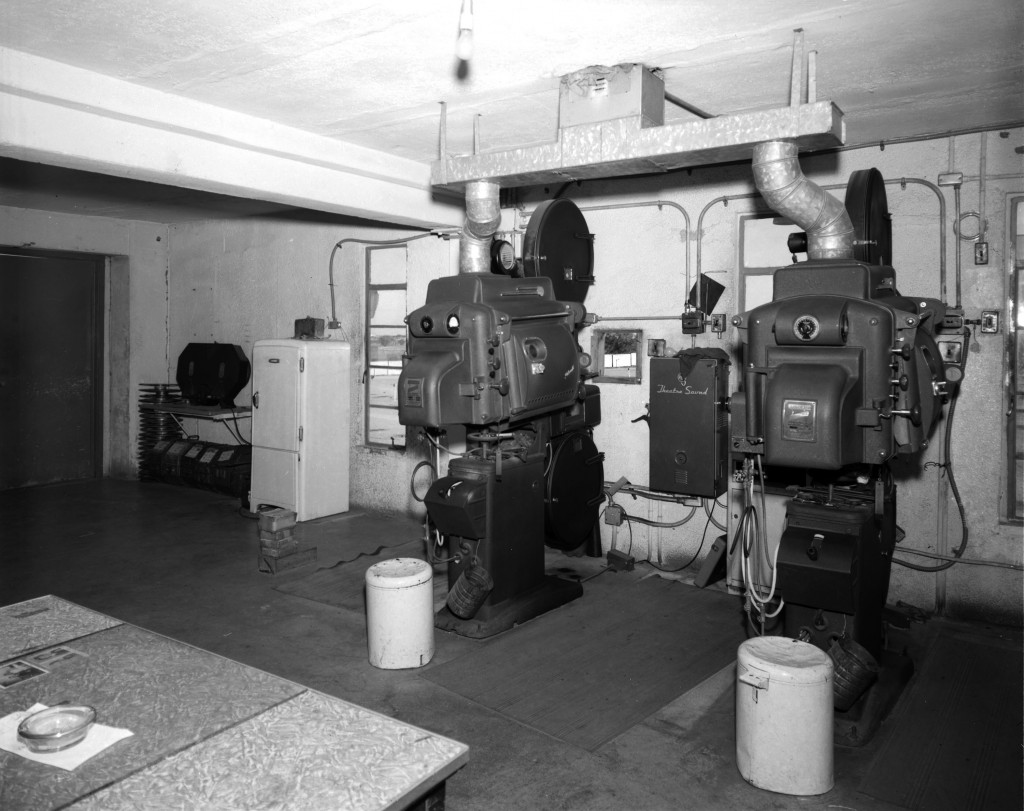
The Classic Pre Automation Drive In Theatre Projection Booth. This one is the Lackland Drive-In Theatre in San Antonio. Image source: The Top Shelf, A blog about Special Collections at the UTSA libraries. The article, The San Antonio Drive-In Movie Theaters, August 19, 2013
The old fashioned projection booth had two projectors. There was a precise system of alternating between the two for projecting separate reels of a movie continuously and uninterrupted. Under normal circumstances that is. If the projectionist messes up, the audience may see numbers on the screen or “jumps” in the movie. A projection mishap audiences tend to enjoy, however, is when a movie frame gets jammed or stopped in the film gate. The image melts and burns before their eyes evoking “whoops and hollers.” Nothing like a hot and heavy love scene suddenly vaporizing.
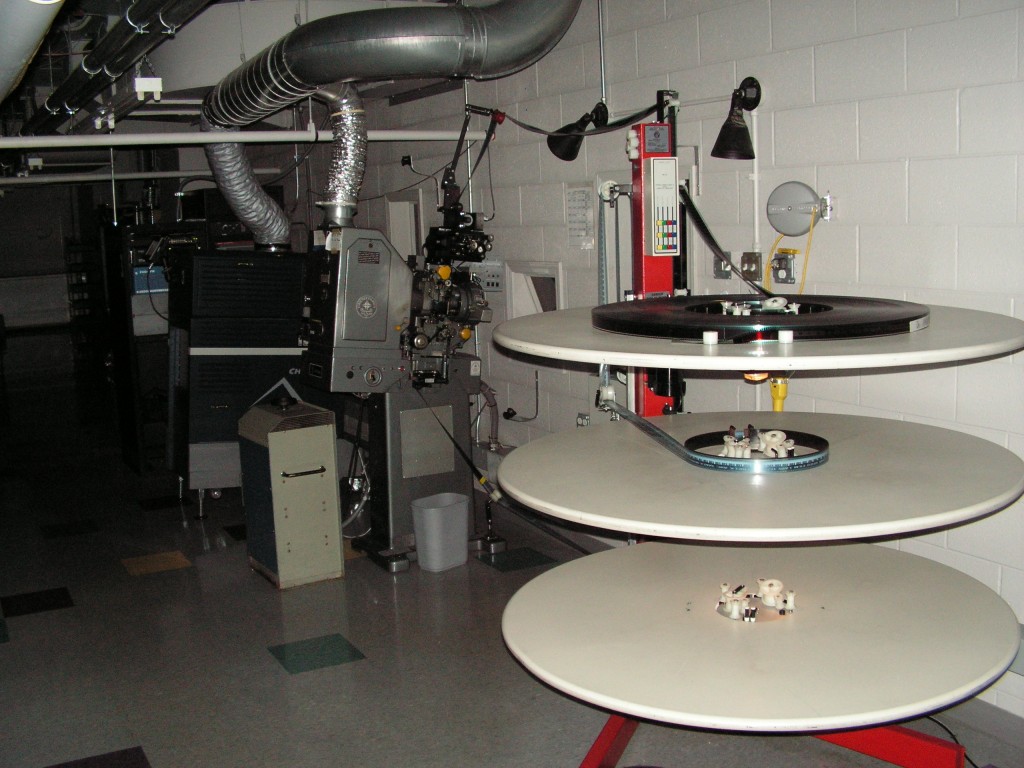
Image Source: Big Screen Blog – Celebration! Cinema
One might think of an automated projection system along the lines of an 8-track tape. A bit different though. The above shows film feeding out through a control mechanism in the center. That mechanism precisely monitors and regulates the speed of that platter with the feed rate of the projector. The separate reels spliced together on this platter are discernable as “bands.” The first reel of a movie is wound upon a core ring at the center of this platter. All the reels are spliced together. The core ring is removed, then the film is wound through the control mechanism and over to the projector via rollers and guides. After the film is projected it runs back to a “take up” platter. It winds, again, upon a core ring. And on it goes.
The platter is most typically made of a light alloy or anodized metal designed to be static resistant.
The platters Herb Krapsi installed at The College 4 were plastic. On some days you walked into the booth your hair stood straight up because of static electricity. Or lighting bolts sparked between yourself and objects you reached for.
“I love it,” said Herb. “My projectionists can’t sleep on the job!”
But there were more problems in his projection booths. Those mechanisms for controlling the speed of the platter went hay wire sometimes. For no reason other than the machines were junk, the platters spun out of control whirling and whipping motion picture film every which way through the projection booth. The projectionist had run over and resolve the calamity. Running caused the picture to jiggle and jump on the screen. When the film feeding into the projector broke, an automatic “trip” was set off to close the curtain, bring up the auditorium lights and play music.
Barbara! “The waaaaaaaaay we were.“
The man in charge of holding together Herb’s plastic prototype film platters was named Mike Boyer. A man I should be ever grateful to for giving me my first job as a projectionist. But there are two thoughts that come to mind at the mention of his name. First his almost Hitler like mustache. Second his need for “Heads and Shoulders” shampoo. The sight of him scratching his head and “sprinkling” an ice cream cone he ate wasn’t pretty.
Boyer and I were standing in the lobby with a number of people milling about the snack bar.
I asked “doesn’t Herb give consideration to the number of complaints he must get about film breaks here?”
His reply was “Herb worry about complaints? That’s why he doesn’t care about complaints.”
I looked to where he was tipping his flaky head. A woman with her hair up in big rollers was eating out of a tub of pop corn as a dog would eat except she wasn’t on all fours or eating off the floor.
Mike sensed I hadn’t observed completely. “You didn’t look at her hair, did you?”
A second look revealed several six legged creatures with long antennae crawling in and out of her curlers.
“That’s why Herb doesn’t care,” Boyer finished his ice cream cone.
Interesting though, Mike Boyer noticing someone’s hair but not his own.
Herb Krapsi was especially excited with the release of Scanners in 1981. “This is going to make us a lot of money,” he said. “Run the preview in all four theatres.” Only problem was it was an “R”rated film. The trailer or preview was to be used appropriately. We pointed out previewing Scanners for the audience watching Disney’s Song of The South might not be a good idea.
“F___k ’em,” he said. “Run it!”
Below is a link for the preview. You’ll see what mothers and young children watching Song of the South were presented with. The outrage was fierce and intense among the people storming out of the auditorium to complain. Herb pleaded ignorance. He said his projectionist failed to inform him about the horrifying subject matter.
Yep, that’s right. I did it.

. . . . photo San Diego Reader, 7/6/06, “Field of Screens,” p.26
The Campus Drive In closed in February 1983. The College Theatre carried on awhile longer. The Majorette Portion of the Campus Drive In mural was preserved. It can be seen today at College Grove Center. I wondered with all the new construction at SDSU over the years why a wall of one of those buildings couldn’t have been dedicated not only to the majorette but the entire mural. Precious little of our past landscape survives. Those imaginative elements with colorful and unique detail seem so easily discarded. And replaced by what?
Scanners Preview
YouTube featurette shows a projectionist at work.
 Dan Soderberg Photography
Dan Soderberg Photography
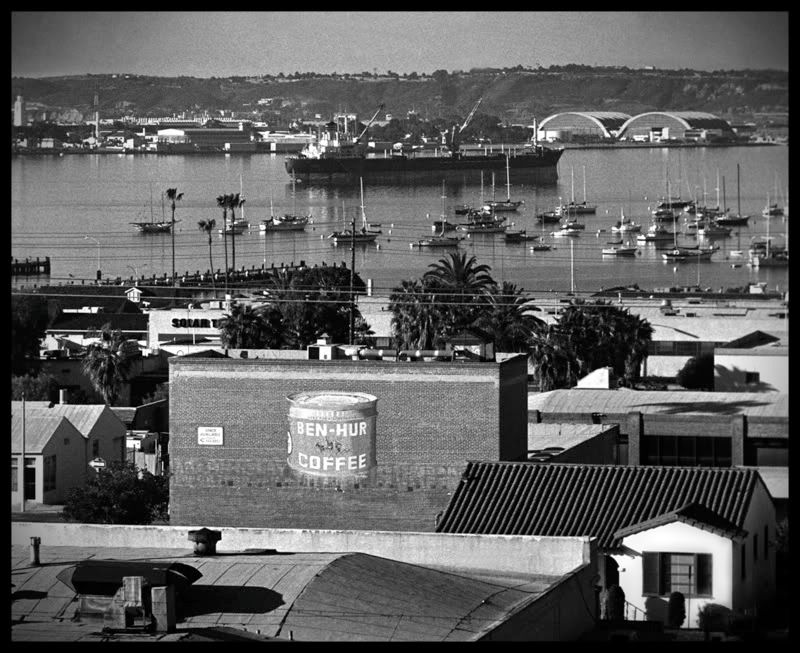
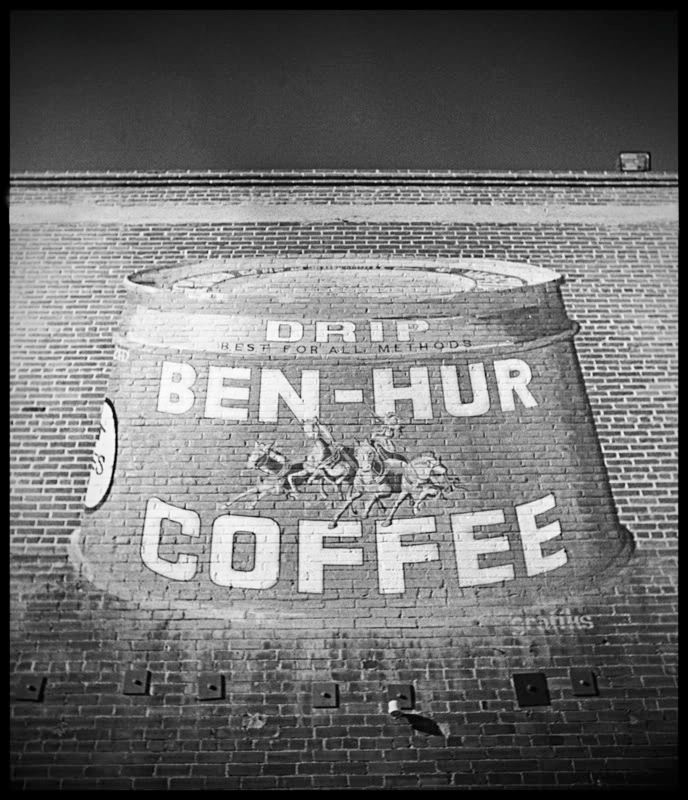
 ebay
ebay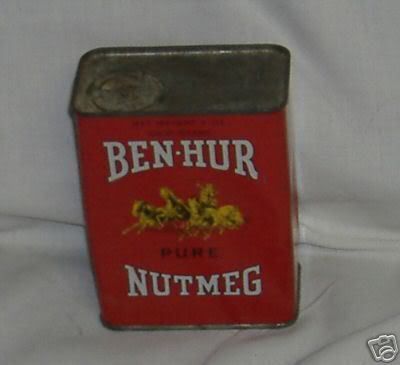 ebay
ebay